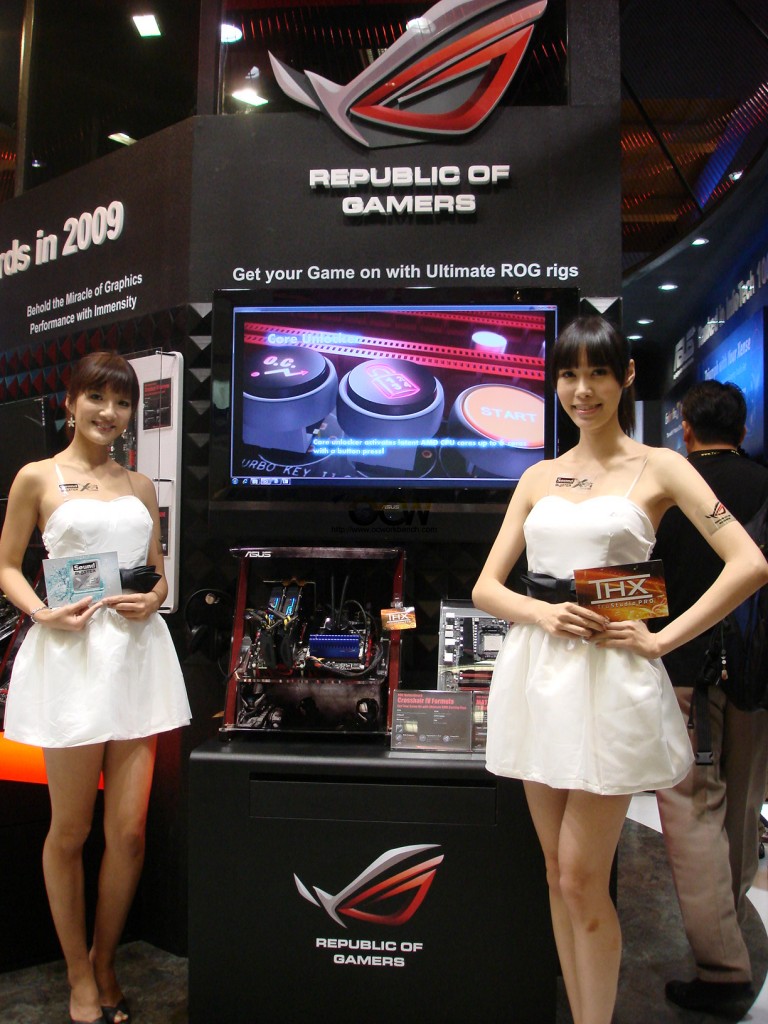ASUS Goes Green at CeBIT
From Notebooks to Motherboards, ASUS Balances Eco-innovation and Design with its Green Design Showcase
CeBIT 2010, HANNOVER, GERMANY (March 2, 2010) — Going Green is a lifestyle choice. At this year’s CeBIT, ASUS has set aside a special Green Design Product zone to showcase Green technology and innovations that empower consumers keen on going Green. ASUS believes that going Green starts within the organization, and promotes environmental responsibility within its workforce and processes. It recently implemented greener manufacturing processes across its product lines—a move which will see it deliver halogen-free products. ASUS’ latest line-up of Green Design technologies, ranging from its notebooks, Eee PCs, EeeBox PC, LED monitors and motherboards, show the world that the company is dedicated to revolutionizing not just the way people work and play, but also how they care for the environment as well.
Green Notebooks—U Series Bamboo Collection
Last year, ASUS became the first notebook manufacturer to receive the Environmental Product Declaration (EPD) and Carbon Footprint certifications. It is also the only notebook manufacturer to receive the EU Flower certificate. These accolades bear testament to ASUS’ commitment to the environment and green product design. And that continues with the introduction of the U Series Bamboo Collection.
A result of ASUS’ Green Material Innovation initiatives, designers have taken advantage of bamboo’s regenerative characteristics and relatively short maturity growth period of 3 to 5 years, and developed the material for the U Series Bamboo Collection’s lid and palm rest. This reduces plastics usage by 20 percent, and gives an elegant and organic feel to the otherwise drab feel of today’s notebooks. On top of that, the U Series Bamboo notebook features a mercury-free LED-backlit panel.
The bamboo theme continues with its 100 percent recyclable packaging, where the material is used as a substitute for paper. Packaging volume is also reduced by 10 percent when compared to other similar products of similar size.
Green Netbooks—Eee PC™ 1005PE
The energy-efficient Eee PC™ 1005PE features a mercury-free LED-backlit panel and the ASUS Super Hybrid Engine power management technology gives it a 14-hour battery life for all-day computing.
The 1005PE’s energy consumption figure is 45 percent less than Energy Star V5.0 requirements. The 1005PE is also certified by EPEAT in North America.
The 1005PE comes packaged in corrugated cardboard with at least 80 percent recycled content. Through a package reduction design process, the final packaging volume is some 11 percent smaller than other similar sized products.
Green EeeBox—EeeBox PC EB1501
The EeeBox PC EB1501 has received EU Flower and EPEAT Gold certifications in Europe and in North America respectively. With a total volume of just 1.5L, the space-saving EB1501 consumes 70 percent less power than a normal desktop PC. With a maximum power supply of 65-watts, its energy consumption figure is 56 percent lower than Energy Star V5.0 requirements, and is well below the 250-watt ratings of most computers today.
Green Motherboards—Protect 3.0
Motherboards are the heart of the system, and ASUS Green Design has come up with a new standard in motherboard protection with ASUS Protect 3.0. This new motherboard design protects the Earth, the system and user.
It features an eco-friendly Energy Processing Unit (EPU) that automatically monitors and adjusts the system’s power requirements to ensure maximum efficiency. Studies have shown that 10 million EPU-enabled motherboards can reduce annual CO? emissions by 210,000 tons—the equivalent of saving 17.5 million trees annually.*
In addition to that, Protect 3.0’s EMI and Anti-Surge features protect users and their systems—reducing radiation exposure by up to 50 percent and preventing electrical surges from damaging the system.
A Green View—Designo LED Monitors
The Designo Series LED monitors (MS248H/ 238H/ 228H/ 208N) feature mercury-free LED-backlit panels that are 45 percent more energy efficient when compared to conventional LCD monitors. These LED monitors reduce CO2 emissions by 30 percent and achieve energy consumption levels lower than the stringent Energy Star V5.0 requirements. In addition, the monitors’ plastic parts are not sent for plating during the manufacturing process, thereby preventing environmental damage and contamination by the plating solutions.
![[CeBIT 2010] ECS showcases Green products, new graphics cards and motherboards at CeBIT 2010 [CeBIT 2010] ECS showcases Green products, new graphics cards and motherboards at CeBIT 2010](https://en.ocworkbench.com/wp-content/uploads/2010/03/image001-copy-150x150.jpg)

